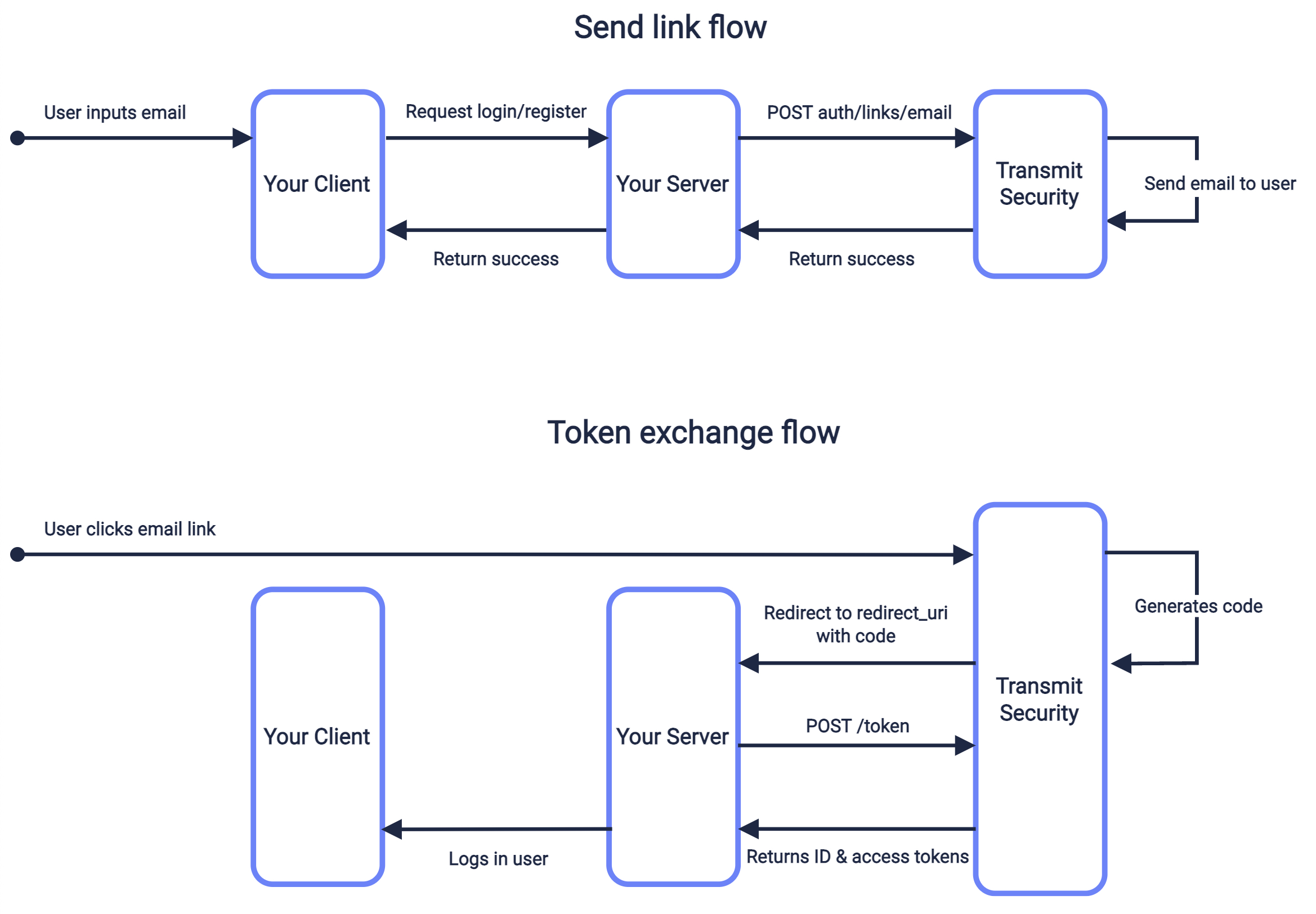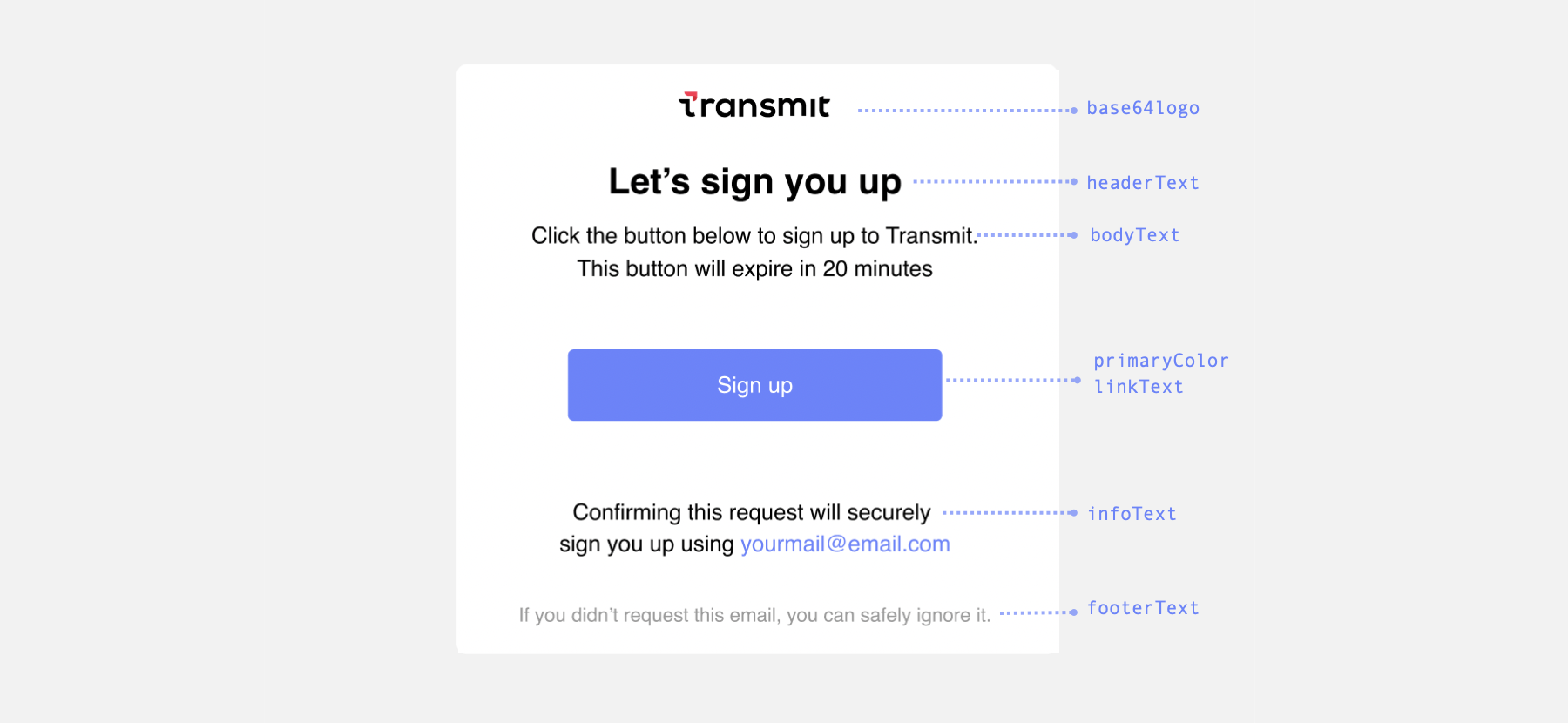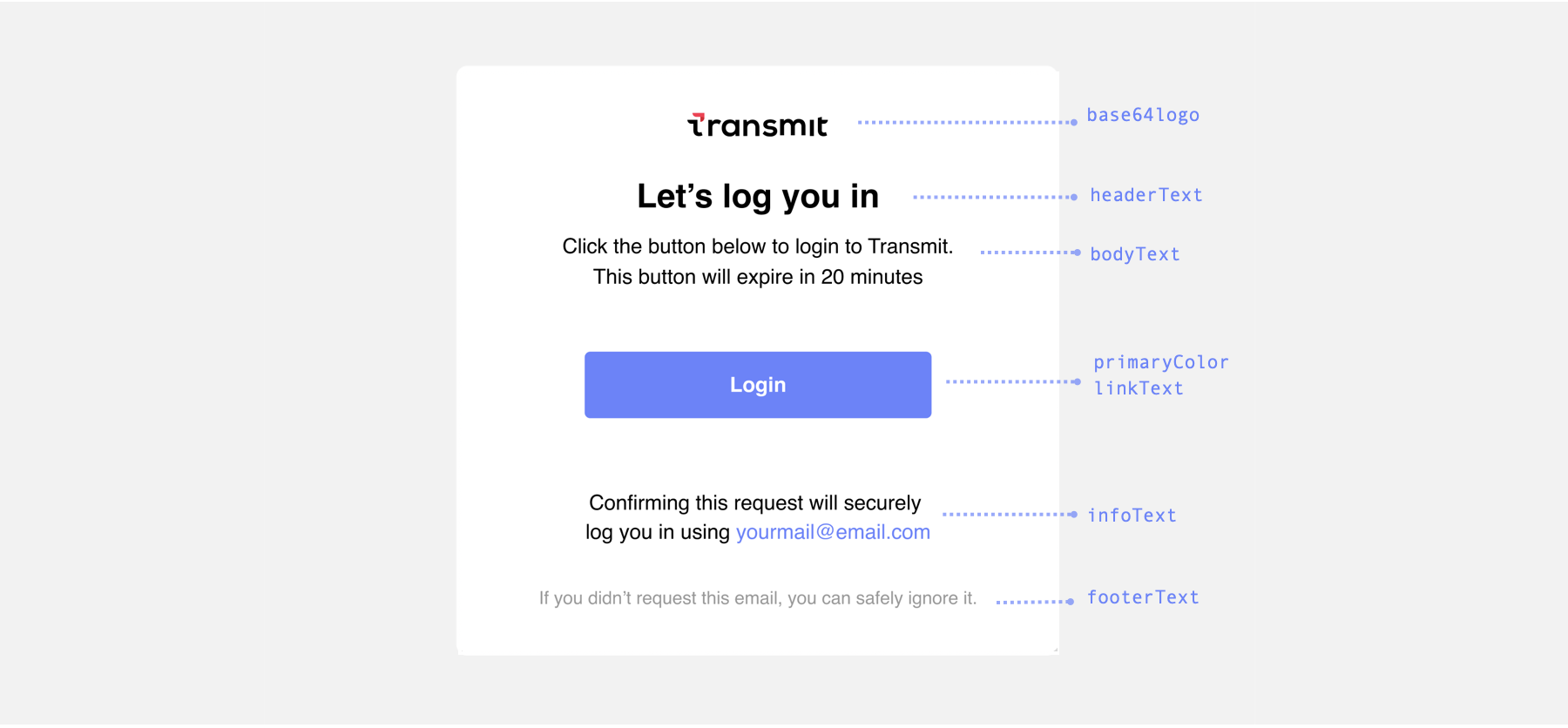Magic links can be sent to users by email in order to authenticate existing users or create new users.

Create the redirect endpoint that will receive an authorization code when the user clicks the magic link in their email. This code will later be exchanged for an ID and access token. The redirect URI should accept code as a query parameter. For example, if https://domain.com/verify is your redirect URI, then Mosaic will redirect to https://domain.com/verify?code=123abc when the user clicks the link.
Add the redirect URI (e.g., https://domain.com/verify) as an allowed redirect URI for your Mosaic application. This will also be the redirect_uri that you'll need to pass in the send request.
From the Admin Portal under Applications, click on your application to edit your application settings and add this URI under Redirect URIs. If you don't already have an application, create a new application.
Use a send request like the one below to send a magic link to the specified email address. The create_new_user parameter will determine if this flow applies to new users, or only to existing ones. If set to true (and public sign-ups are enabled for this application), a new user is created once the code is exchanged if no user is found for the specified email. The redirect_uri should correspond to the redirect endpoint you created in step 1 and added as a redirect URI in step 2. If passed, client_attributes are used to validate that the magic link is clicked from the same device that requested it. This flow is described in the sequence diagram above.
Make sure you have a valid client access token to authorize the request. If not, you'll need to get one. Learn more
curl -i -X POST \
https://api.transmitsecurity.io/cis/v1/auth/links/email \
-H 'Authorization: Bearer 91827321837bdfjf' \
-H 'Content-Type: application/json' \
-d '{
"email": "name@example.com",
"redirect_uri": "https://domain.com/verify",
"create_new_user": true,
"client_attributes": {
"user_agent": "Mozilla/5.0 (X11; Linux x86_64) AppleWebKit/537.36 (KHTML, like Gecko) Chrome/51.0.2704.103 Safari/537.36",
"ip_address": "123.45.67.89"
}'If you want to customize the email, see Next steps.
Upon clicking the magic link from their email, the user will be redirected to the redirect URI you specified in the request. The URI will include a code in the query that you'll need to exchange for ID and access tokens by sending a /oidc/token request like the one below. Replace placeholders with the code you received earlier, your redirect URI, and your client credentials that can be found in your application settings from the Mosaic Admin Portal.
curl -i -X POST \
https://api.transmitsecurity.io/oidc/token \
-H 'Content-Type: application/x-www-form-urlencoded' \
-d client_id=CLIENT_ID \
-d client_secret=CLIENT_SECRET \
-d code=CODE \
-d grant_type=authorization_code \
-d redirect_uri=REDIRECT_URIOnce you've completed a basic integration, here are some customizations you can consider:
The following default email templates can be customized either from the Admin Portal or via API (but not both):
- Sign up: sent to log in a user for the first time (if you allow auth flows to create new users)
- Login: sent to log in an existing user
From the Admin Portal (B2C or B2B Identity based on your setup > Authentication methods > Email magic links), you can customize the color of the button and email address that appear in the message of the default templates. The email message will use the application's logo and name. See the screenshots below for the default texts.
To customize the email subject, text and appearance, use the email_content object in the send request, for example:
curl -i -X POST \
https://api.transmitsecurity.io/cis/v1/auth/links/email \
-H 'Authorization: Bearer 91827321837bdfjf' \
-H 'Content-Type: application/json' \
-d '{
"email": "name@example.com",
"redirect_uri": "https://domain.com/verify",
"create_new_user": true,
"client_attributes": {
"user_agent": "Mozilla/5.0 (X11; Linux x86_64) AppleWebKit/537.36 (KHTML, like Gecko) Chrome/51.0.2704.103 Safari/537.36",
"ip_address": "123.45.67.89"
},
"email_content": {
"subject": "Login to ACME",
"primaryColor": "#6981FF",
"base64logo": "data:image/png;base64,iVBORw0KGgoAA...XEzGmCC",
"headerText": "Let'\''s log you in",
"bodyText": "Click the button below to log in",
"linkText": "Login",
"infoText": "Confirming this request will securely log you in",
"footerText": "If you didn'\''t request this email, you can safely ignore it."
}
}'If you pass the email_content object, all the email branding will be taken from there and the default template won't be used at all. This means that if a field is not specified, it will be treated as empty.
Here are screenshots of the email templates with their customizable field names:


From the Admin Portal (B2C or B2B Identity based on your setup > Authentication methods > Email magic links), you can customize:
- Expiry time in minutes for the link sent in the email
- Email sender name ("from" name)
Make sure to apply the changes to the relevant application by selecting it from the top of the page.